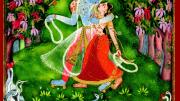Three decades ago, Diana L. Eck—master of Lowell House and Wertham professor of law and psychiatry in society (a scholar of South Asian religions, despite her chair’s title)—wrote Banaras: City of Light, exploring Hinduism through its holiest pilgrimage site. Her perspective has become ever more expansive, as she has explored the interconnected pilgrimage sites throughout India. Now she explicates that interwoven world-view of the sacred and the profane in India: A Sacred Geography (Harmony Books, $27)—a sweeping examination of texts, places, and beliefs that may also help to explain to Western readers the rise of place-based Hindu nationalism in Indian politics. From chapter 2, “What Is India?”
In ancient Greece, Eratosthenes, in the third century b.c.e., was the first to coin the word “geography.” He clearly saw his work—the mapping of the known world, the oikoumene, and the calculation of its circumference—to be quite distinct from the kind of world description found in Greek myths or in the epics of Homer. Ernst Cassirer has distinguished the “geometric space” that concerned Eratosthenes and, a few years later, Euclid, from what he calls the “space of perception” and “the space of myth.”…While Olympus and Delphi retained their mythic charge in Greece itself, the study of geography began to diverge from the image of the world composed by the great Greek mythmakers.…
Students of Hinduism or travelers in India quickly become aware of what prolific mythmakers Hindus have been. The Hindu tradition is famous for its mythologies, and for the multitude of gods and goddesses one encounters in the temples and public spaces of India. Less well known, however, is the fact that Hindus have been equally avid geographers who have described with considerable detail the mountains, river systems, and holy places of India. For the most part, Hindu mythology has been studied by one group of scholars, primarily historians of religion, while the geographical traditions have been studied and catalogued by another group, primarily British and Indian civil servants, historical and cultural geographers. The great geography scholar Bimala C. Law speaks for this latter group when he confesses, “One finds it tedious to read the legendary history of tīrthas or holy places, but to a geographer it will never be a fruitless study.”
Here we look at mythology and geography together, in a single view, to see what we can learn of this complex conception of the land of India. Rather than focusing exclusively on texts, however, we begin “on the ground,” with shrines, rivers, and hilltops where pilgrims have enacted the sense of connectedness that is part of pilgrimage. This intersection of mythology and geography reveals how the people who have come to be called Hindus have “mapped” their world and how they have understood the land they have called Bhārata in relation to the larger universe. There is arguably no other major culture that has sustained over so many centuries, and across such diverse regions, a fundamentally locative or place-oriented world-view.









